This is an overall introduction to Chinese buns and pancakes.
In China, we call almost all things made from flour (not only wheat flour) as “饼” or “包”. Literally they can be translated as Chinese buns (包) and Chinese pancakes (饼). They are commonly served as staple food, breakfast or side dishes all over the day and you cannot image how many types there are. Those buns and pancakes are different from flavors and texture with different types of cooking method.
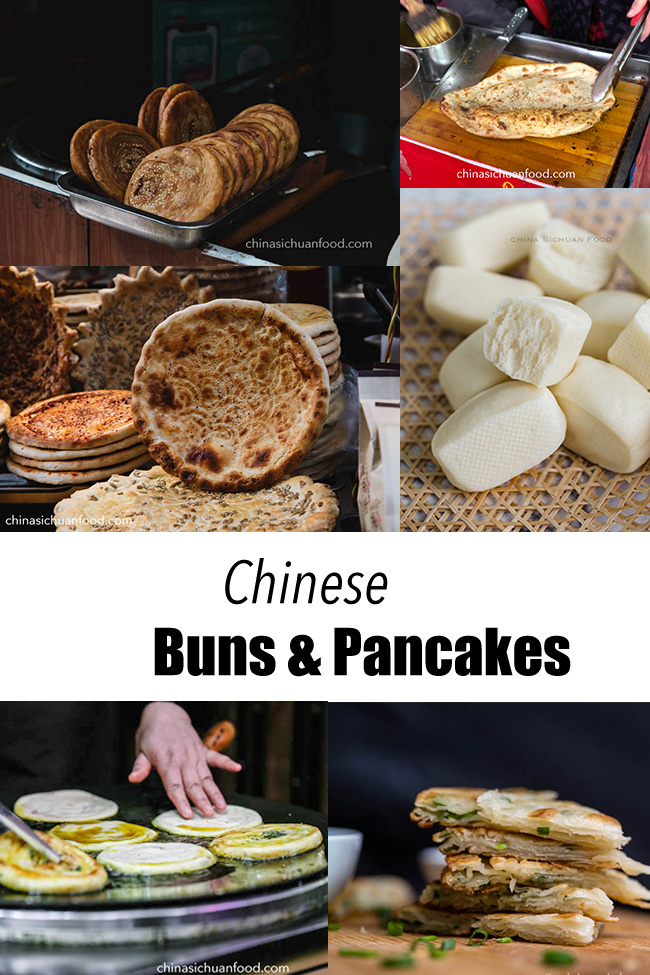
The most obvious difference of Chinese bun and pancakes is whether yeast or other agent is used to make the final dish fluffy an also depending on the shape. In general, all things thin, flat and round are called “pancake” while thick, taller and smaller ones are called as “bread”. In addition, bun has to be fermented with yeast. Situation for pancakes are more complicated. The dough for pancakes has three types, dough without yeast (死面), semi-fermented dough (半发面) and fermented dough (发面).
Chinese Pancakes
Pancakes without fermentation (非发面饼)
Dumplings and regular pancakes usually use a dough without yeast. But the water for the dough, temperature and the ratio can creates different textures. To be specific, unfermented dough can be further divided into cold water dough (冷水面团), boiling hot water (烫面) and semi- dough (半烫面). Cold water dough has a more smooth texture and creates harden shapes. For example, in most cases, we use cold water dough for dumpling wrappers. Hot boiling water dough can make the pancake super soft, more stretchable but less chewy (Shanghai style scallion pancake). For other regular pancakes like this pan-fried beef pancake (牛肉饼), a semi-fermented dough can help to obtain comprehensive features. Scallion pancake usually use hot boiling water dough so it can be stretch greatly and then layover to create multiple layers. Chinese pancakes, in most cases, are pan-fried.
The most famous one can be Peking duck pancake, which is a pan-fried chewy pancake used to serve with peking duck or moo shu pork.We want the pancake to be slightly chewy, less requirement for crispness. I use hot boiling water dough for regular homemade peking duck pancake to obtain a soft texture and easy to cook feature. Another type of Peking duck pancake is steamed, super soft, easy to prepared but less chewy.
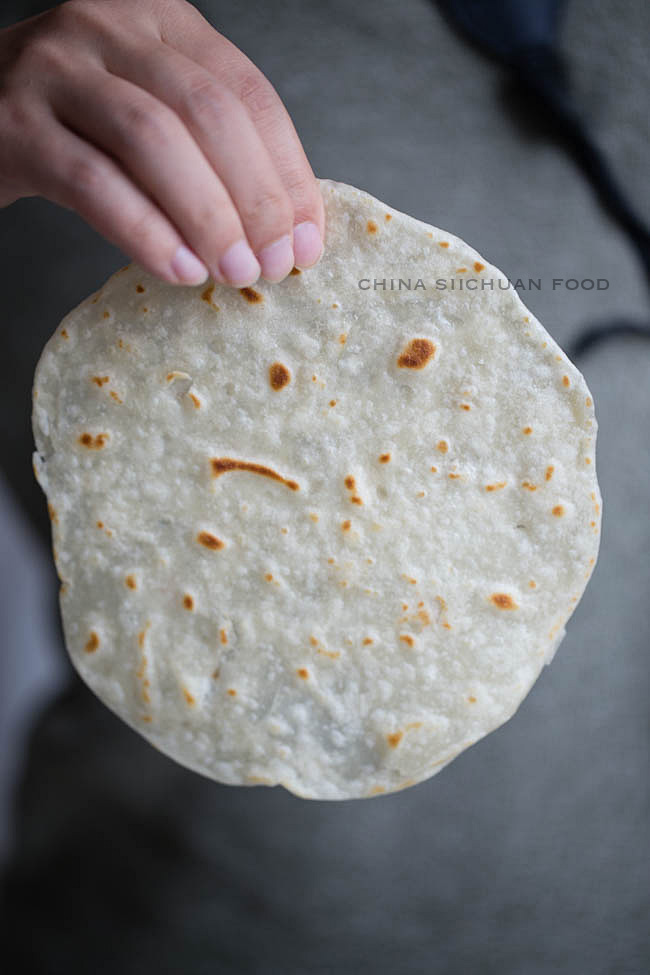
Scallion Pancakes – Here are two types of scallion pancakes here in China, one is Northern style, more chewy, much larger, usually cut into smaller pieces or wedges for serving. And the other type is Shanghai style with shortening included. The former one use both cold water and hot boiling water to create the crispy and chewy texture. However the later one use only hot boiled water to create a amazing softness inside the dough. In addition, the former one is thinner and thus can be cooked within minutes. But it is not easy to cook the thicker Shanghai style scallion pancake. Using hot boiling water can help to shorten the cooking time and guarantee evenly heating.
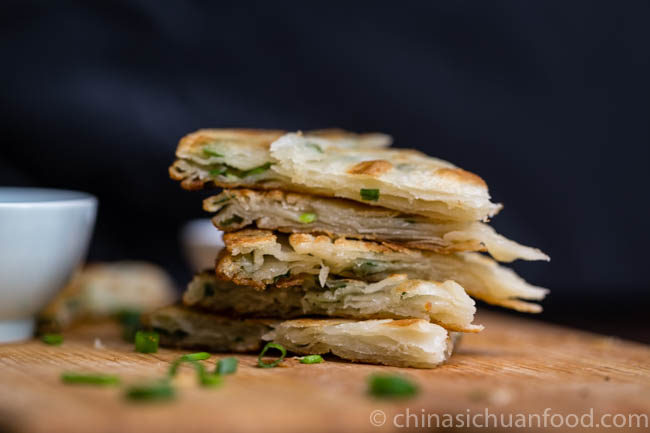
Fried Pancakes (油饼)| In addition to Scallion pancake, all types of fried pancake are quite popular on Chinese street. Usually filled with pork or beef and then shallow fried with oil.
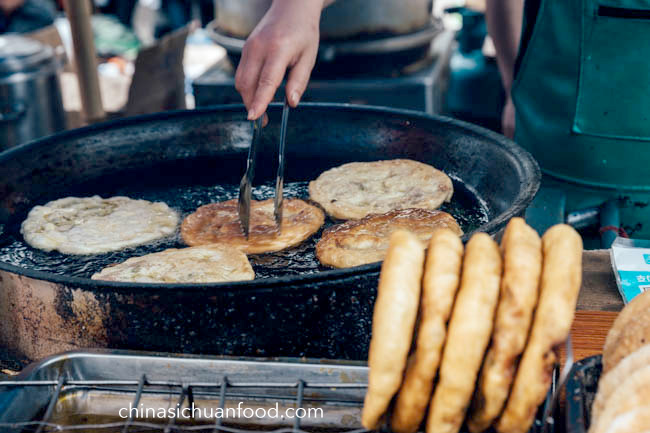
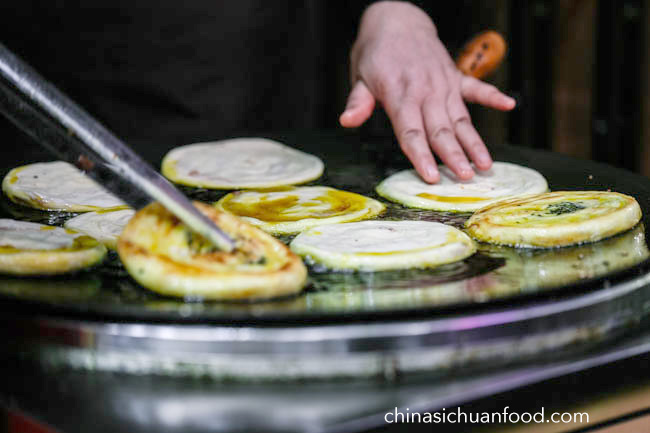
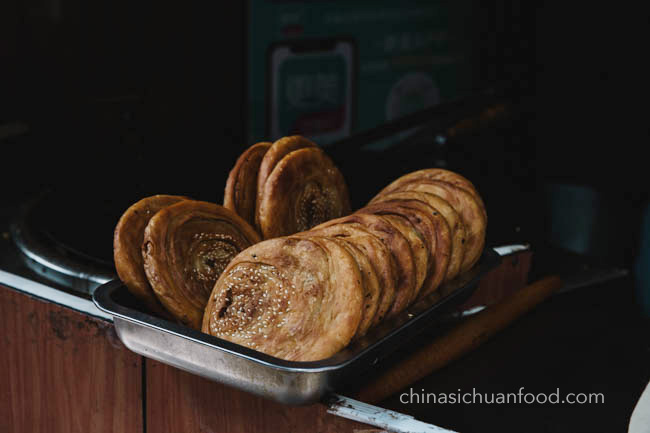
Another pancake which is also shallow fried firstly and then roasted in a bucket oven. This type contains less oil after the baking process and we get a special name for it: Guo Kui (锅盔). However miles away in Hubei provice, the Guokui is directly heated in the bucket oven. I have send a video showing the process on Instagram. Hubei style Guo kui contains less oil and are much crisper and drier.
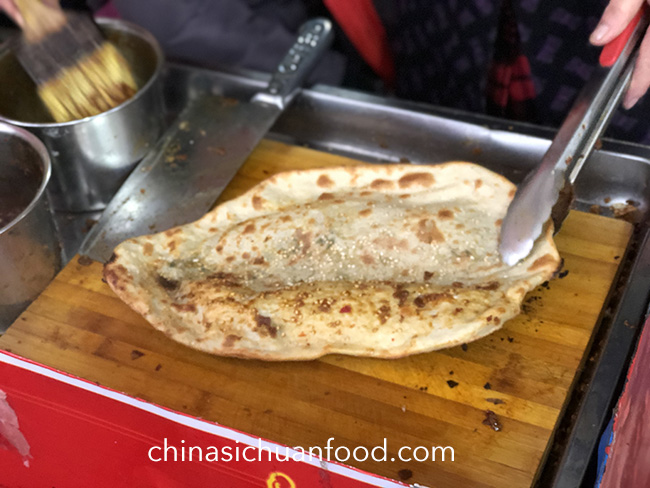
Jian Bing (煎饼) |Chinese Jian Bing shares lots of common with crepes, usually served as breakfast or street food. It is the most popular Chinese breakfast in Northern China. Traditionally Jian Bing usually made from mung bean flour, flour, filled with Bo Cui (薄脆), a deep-fried flour sheets, egg, vegetables, pickles and a combined seasonings. Now we get lots of creations on Jian Bing. The wrappers can be colored and the fillings can be customized.
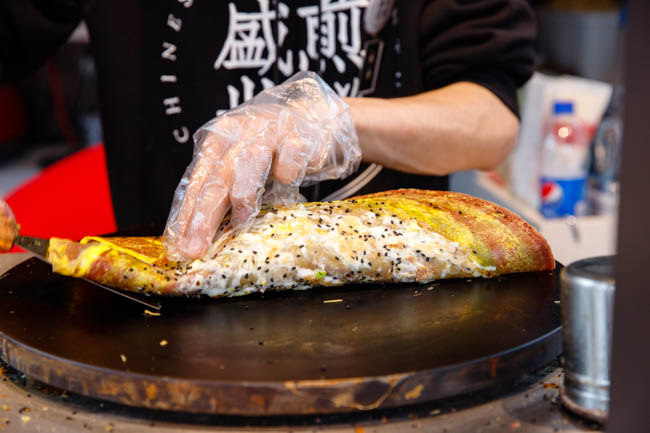
Shredded potato pancake | sometimes we add some additional ingredient to flour and make the pancake quite unique and bring another type of flavor combined. Take this shredded potato pancake as a example, we add spices and potato in it, which makes the pancake full of flavor and quite crispy.
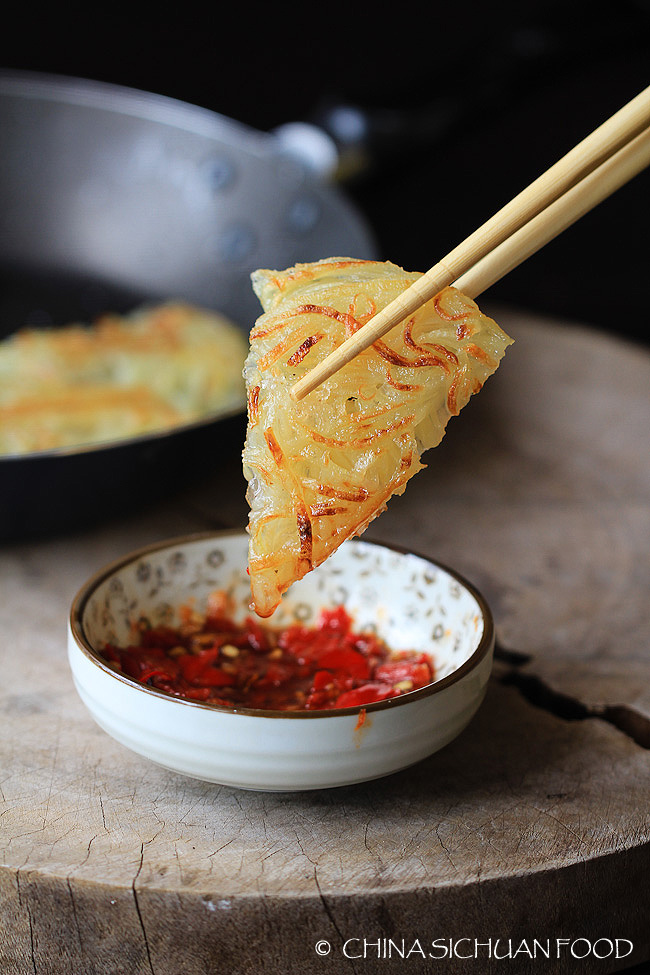
Pancakes with fermentation (发酵饼)
Pancakes with fermentation can be further divided into semi-fermentation and full fermentation pancakes.
Roujiamo (肉夹馍)- is the most famous and popular semi-fermented pancake. It can be found everywhere in Xi’an and other places in Shanxi province, usually filled with chopped beef or pulled pork belly. You can also break this pancake, soak in a soup with bean vermicelli and make a comforting Pao Mo (泡馍).
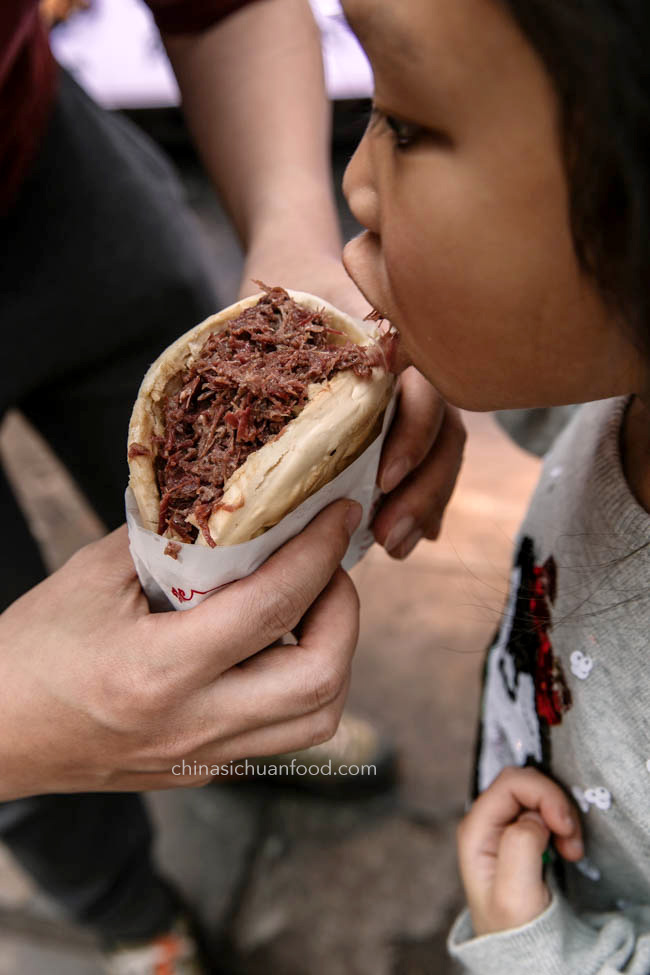
Nang (馕) is a traditional fermented pancake originated from Xijiang area. Usually the dough is fermented and baked on a regional oven. After baking, it contains a low water content which is beneficial to long time storage. The shape of Nang is quite creative, usually with nicely made lace and lovely patterns. Following is a picture of all types of Nang sold on the street.
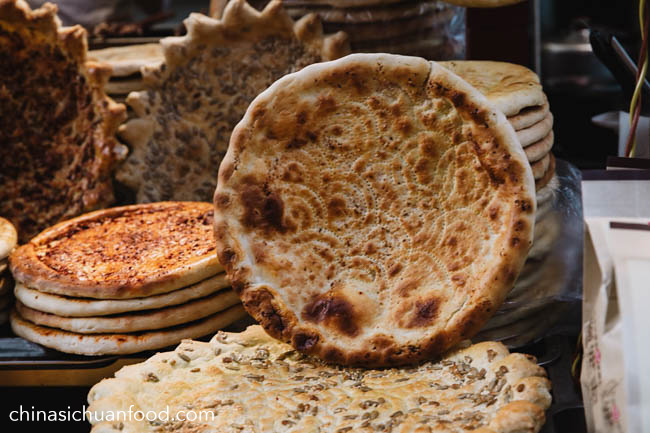
In addition to regular wheat flour, Chinese pancake can be also made from other flours, like rice flour and cornflour. Following is pancake made with cornflour (玉米面饼).
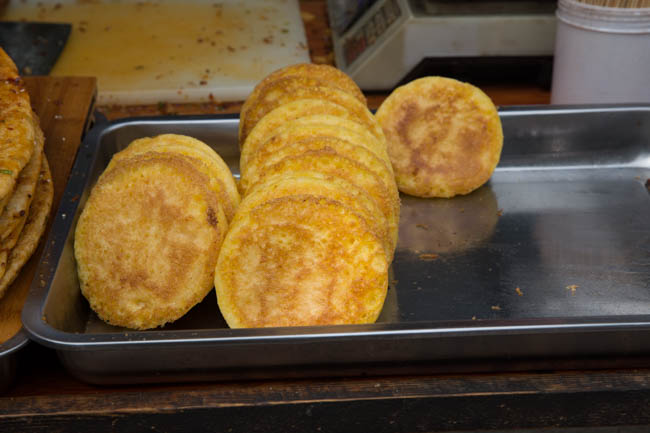
Picture below is pancake made from rice flour. This is a old style pancake.
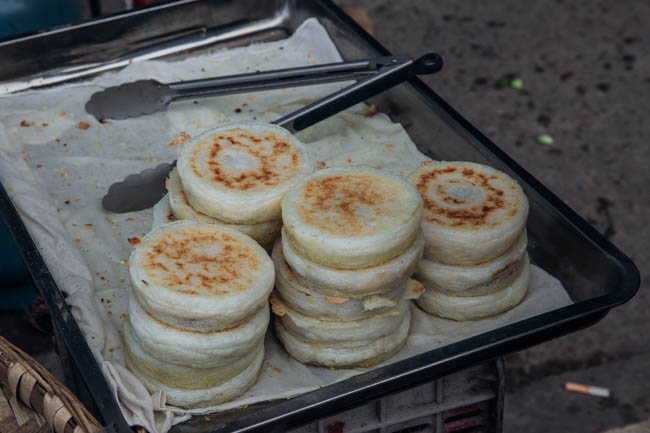
Chinese Bun and Bread
Chinese buns sometimes called as Chinese bao (bao) usually is pillow soft, either stuffed or unstuffed. The basic unstuffed version is called as Mantou while the stuffed version is now called as Baozi. In addition, under the influencing of Japanese baking, we love to make soft bread too. In terms of cooking method, Chinese bread can be steamed, baked or pan-fried. Common Chinese Mantou and baozi are steamed, sometimes pan-fried too. While soft bread is baked.
Chinese steamed buns. Normal Chinese steamed buns or Mantou only uses water, flour and yeast. We do not add baking powder to increase the fluffy. Base on the basic dough, we add sugar to create in concert with the sweet feeling (sweet red bean buns ) or add some oil to avoid the wrapper absorbing the juice from the meat filling (Cha Siu bao). The bun is usually steamed but can also be pan-fried (Pan-fried buns with red bean paste). Filling is not the only way to add flavors for the dough, sometimes we add scallions (bacon or ham), spices and sauces directly in the dough. For example this widely popular scallion buns- Flower shaped buns (花卷). Or buns can make as a holder. We can add lots of other ingredients inside like this Gua bao (steamed buns with braised pork belly).
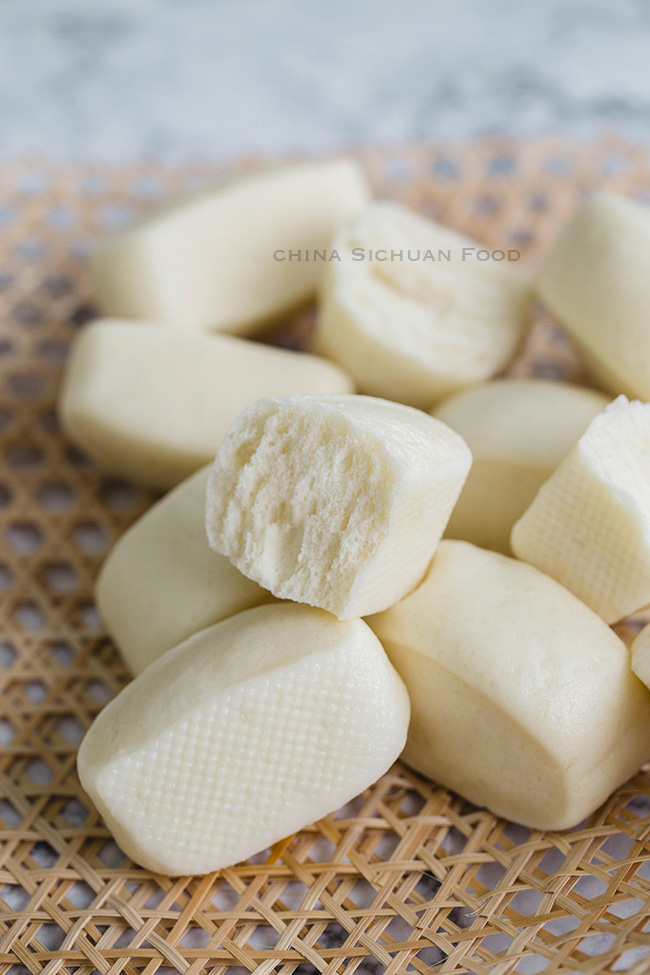
Unstuffed Chinese buns
- Chinese steamed buns- Mantou
- Chinese steamed wheat buns
- Steamed scallion buns
- Steamed pumpkin buns (南瓜馒头)
Stuffed Chinese buns
- Char Siu bao (叉烧包)
- Sweet red bean buns – Steamed and Pan-fried
- Chinese sugar buns (糖三角)
- Custard milk buns (奶黄包)
- Steamed buns with hoisin pork
- Steamed Sausage Buns (Lop Cheung Buns)
- Vegetarian Steamed Buns (Baozi)
- Mini Sweet Bean Paste Buns
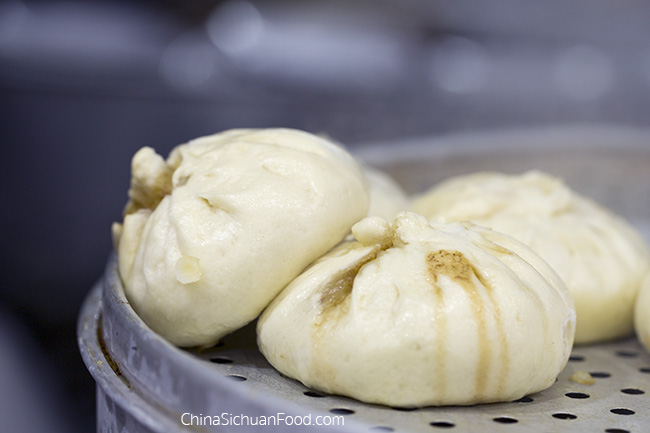
Shengjian Bao (生煎包) is something slightly different from basic steamed buns. It is actually semi-fermented just like the Roujiamo. Shengjianbao now is popular across the country but has a reach the peak of population in Shanghai.
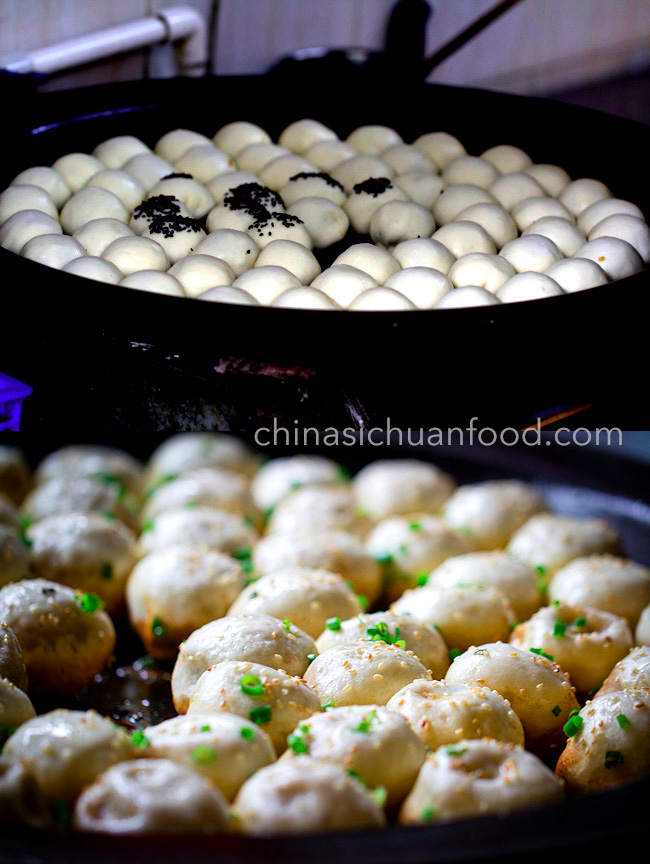
Another great type of Chinese bread is in Chinese bakery. Chinese baking is strongly influenced by Japanese baking. We love soft and fluffy bread. The most common and famous baked buns including baked char siu bao (叉烧餐包), milk buns (基础牛奶包),coconut buns with coconut filling (鸡尾包). You can find lots of other types in Chinese bakery.
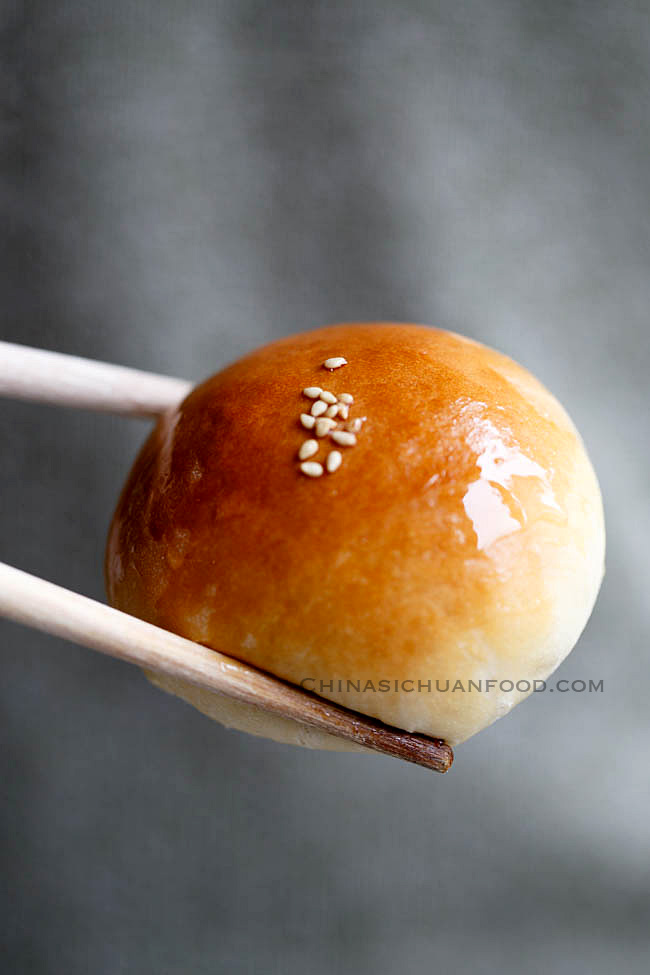
Elaine will add any further information if needed. Or please me a comment for a specific type of buns, pancake and bread.

Thank you! This was very helpful! Will you also have a guide about Chinese pastries? Can you please please please post a recipe for xie ke huang (蟹壳黄) with scallion filling? 🙂
Thanks for the suggestion. I will test the recipe of Xie Ke Huang soon.
I would love to make Chinese Curry Beef Buns. Do you have the recipe for these? Thank you so much for sharing your recipes.
Hi Kelly,
Check this one.
Great email, would you publish recipes for Shengjian Bao (生煎包) or other steam breads that use wild yeast (sourdough starter is another name). Thank you
Wild yeast is not commonly used in modernized kitchen. But I will try to post an introduction about Chinese wild yeast.
Thank you, I have learned from your recipes and procedures thank you. Always look forward to your next email. I asked about the wild yeast because a friend of mine back in the late 1960’s talked about the wild yeast boa he had. Also, saw this https://www.poppr.be/virtualtour/puratos/#p=scene_p1.html
Showing wild yeast steam bread.
This is amazing information, David. I love their work so much. I will definite trying use wild yeast soon when I back to home.
Elaine,
I do have starter that came out of Alaska in 1965, it was old then. I make regular forms of sourdough bread weekly with it. I make Chinese steam bread with a recipe that I learned from my friend back in the 1960’s that doesn’t use wild yeast. He came over from Taiwan in the late 1950’s. Instead of reinventing the wheel, I reached out to you as you have many more contacts than I do. Thank you for considering my request. I can send you dried starter and instructions on reviving it if you wish. You have my email address.
Thanks for the post Elaine! Do you have a recipe for Jian Bing? My friend and I would really like to make them. Your recipes are always the best. Other Chinese recipes written in English don’t taste like real Chinese food. Thank you for all your hard work and recipes!
Thanks so much Jen. This is such a great comment. I am devoted into making authentic Chinese recipes. I will plan to make Jian Bing soon.
Many thanks Elaine! I look forward to it 🙂